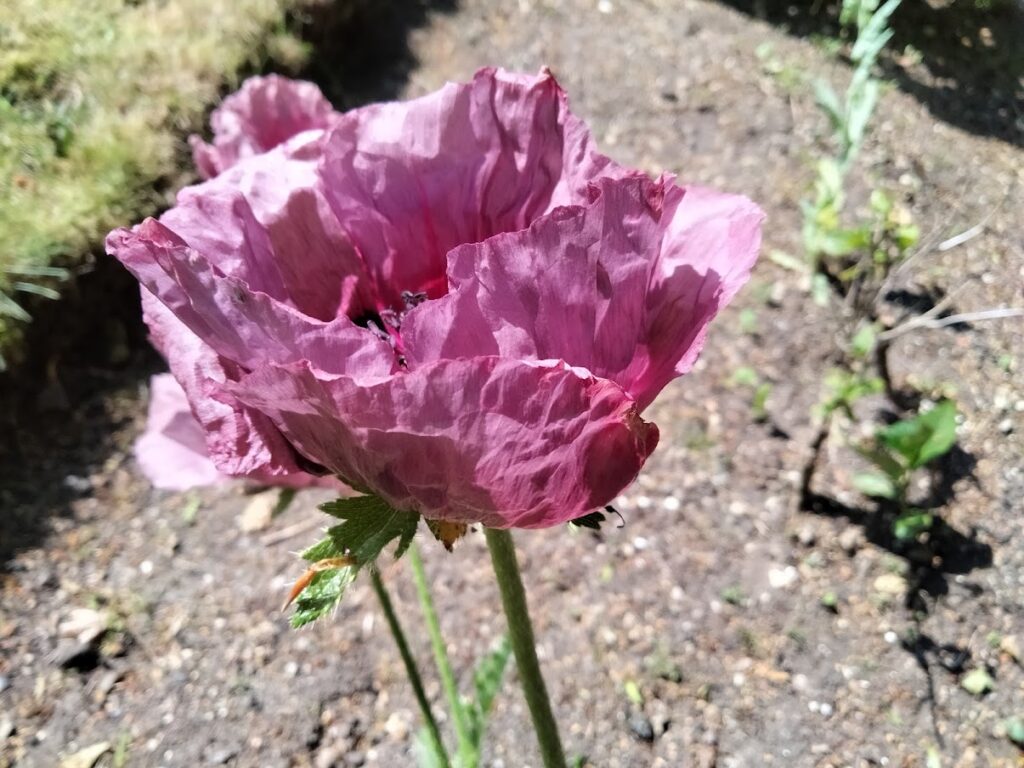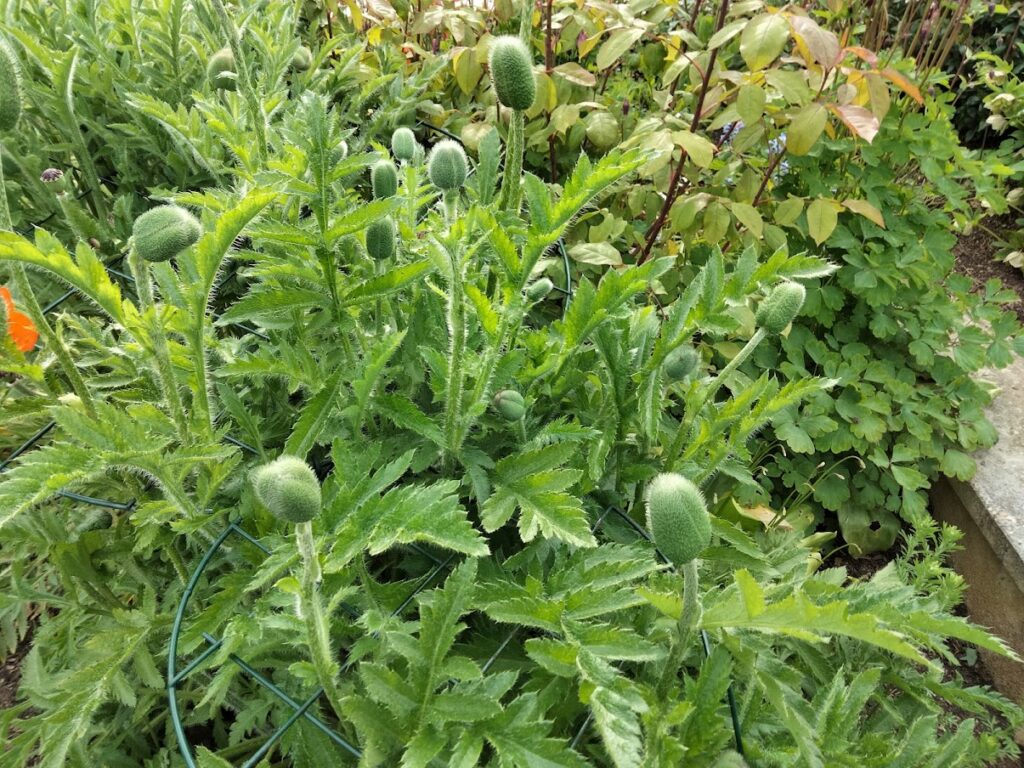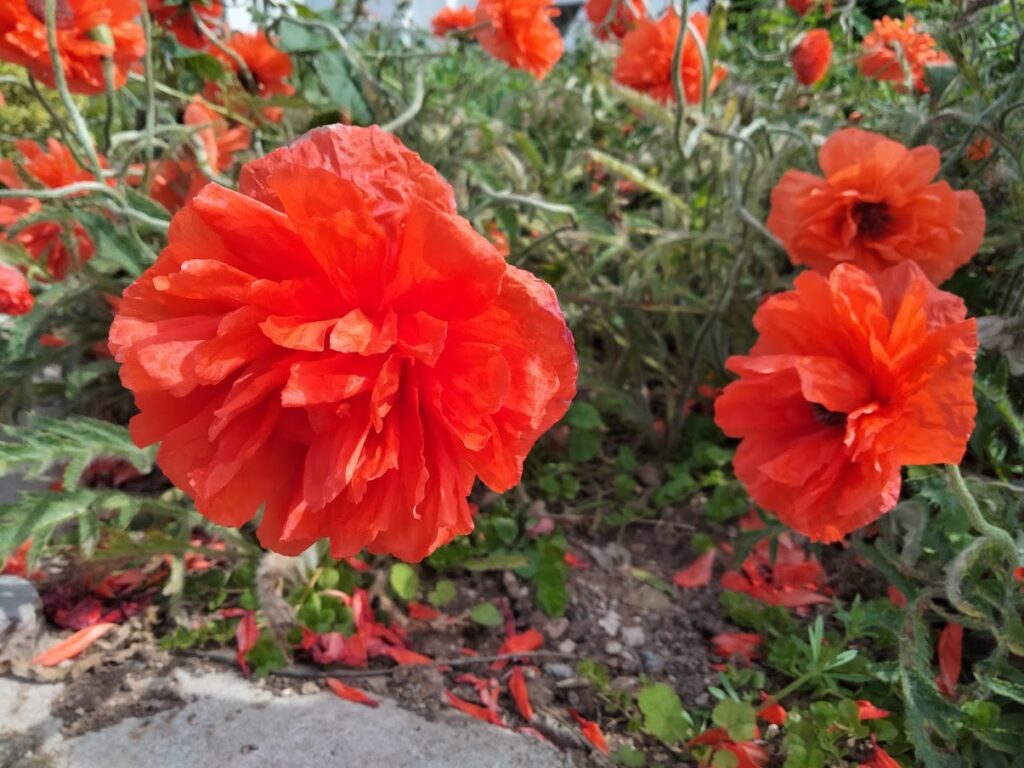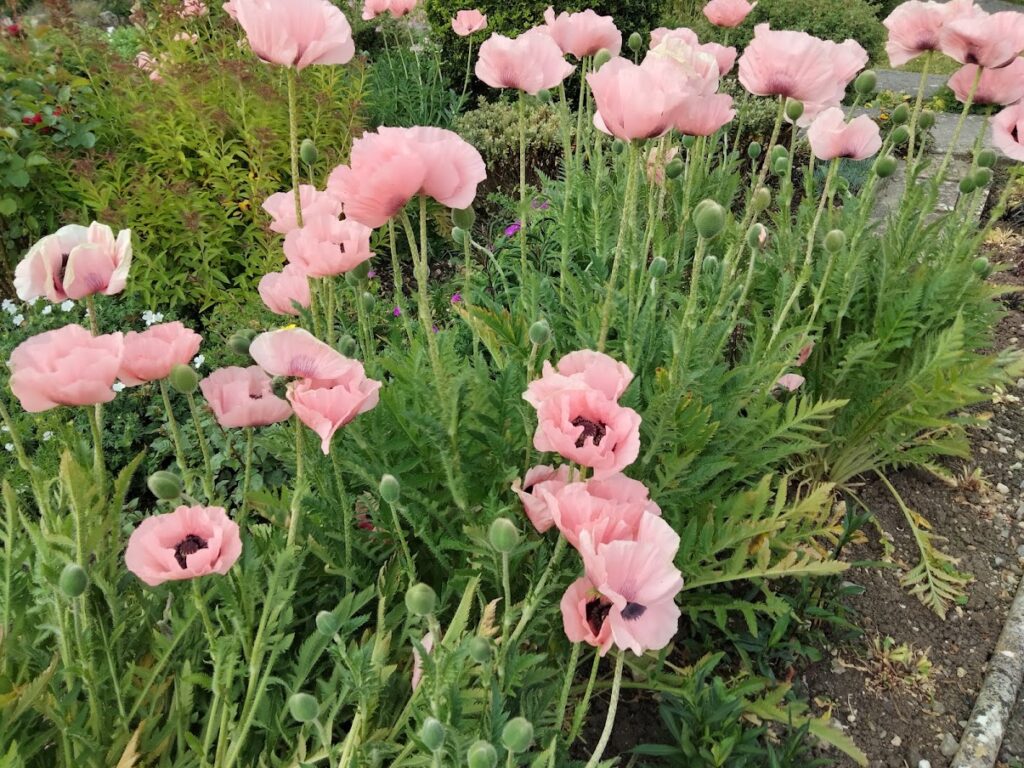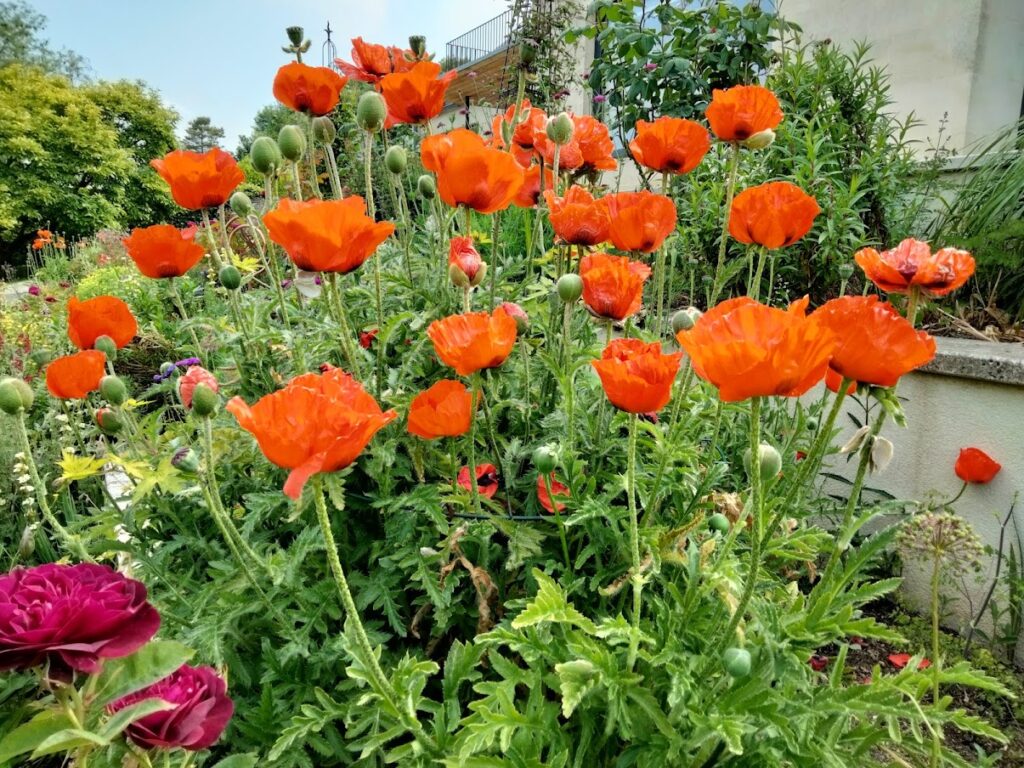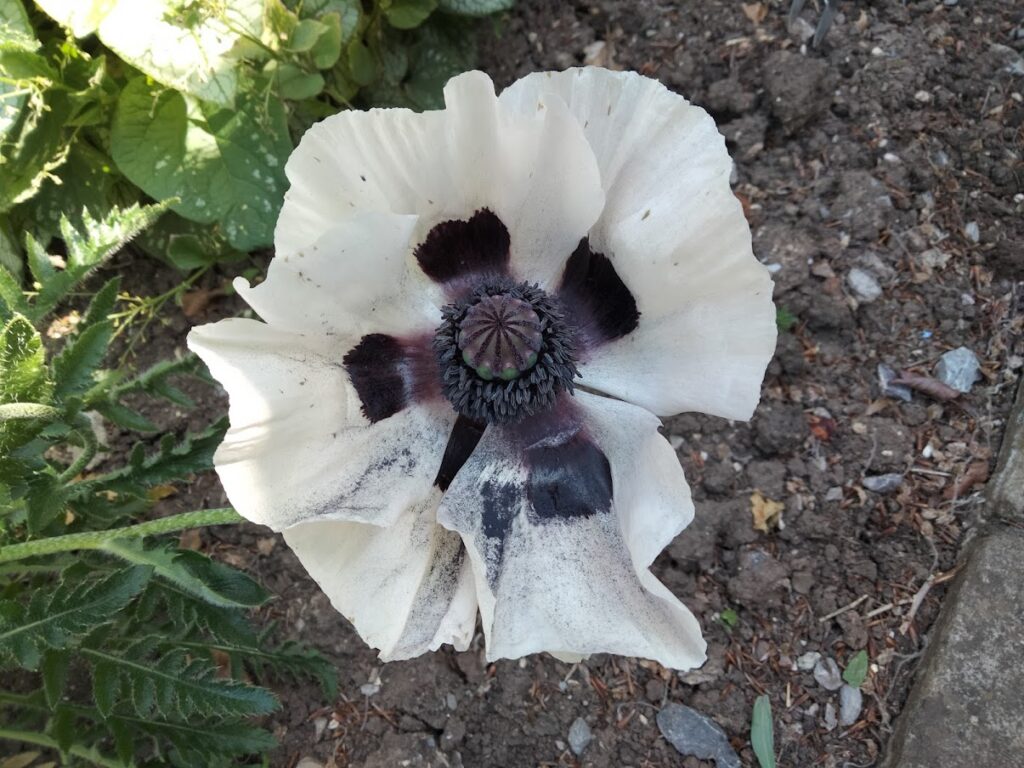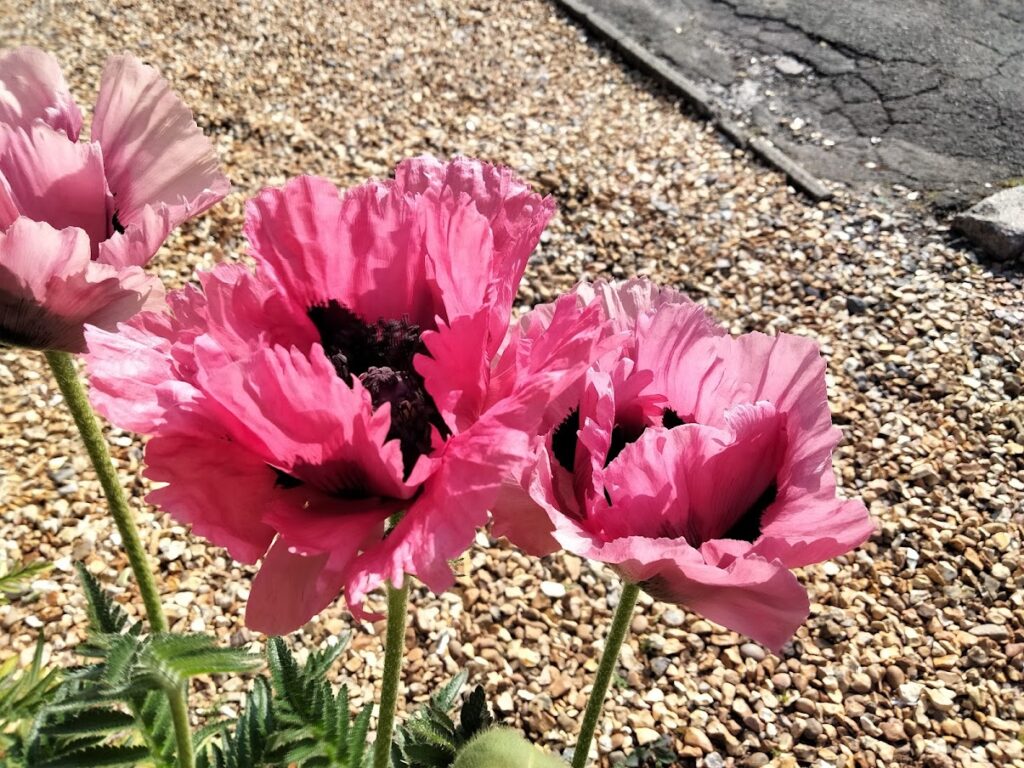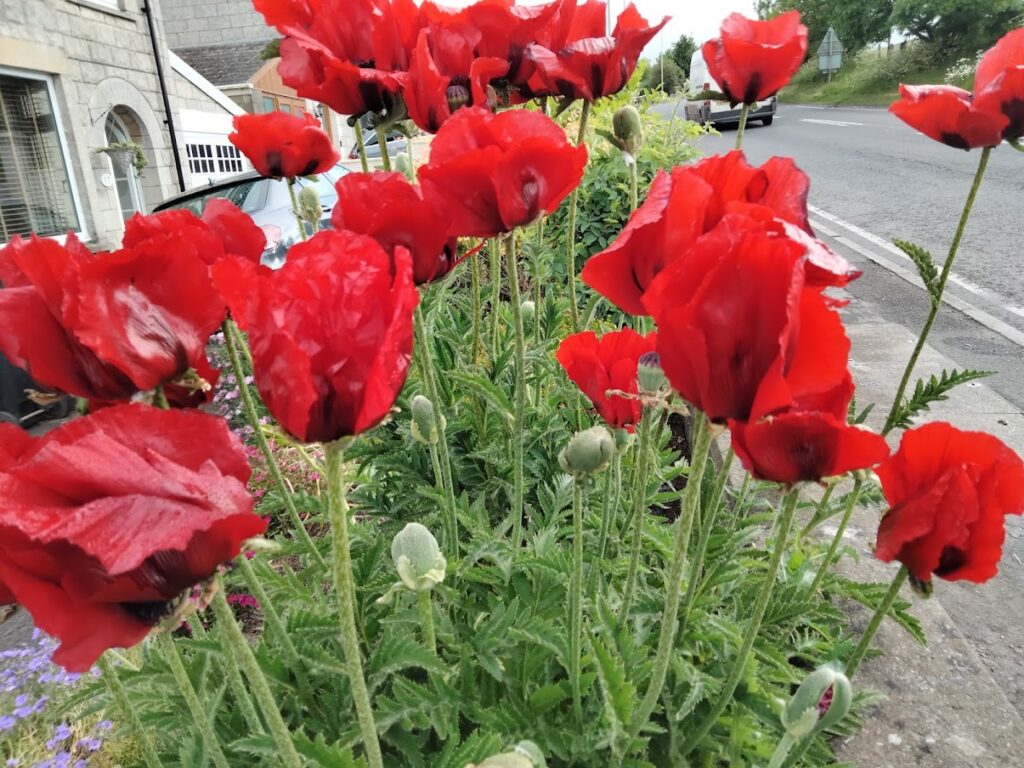Poppies
There are many plants that make up our herbaceous borders.
Of the most dramatic early summer plants are the oriental poppies. These plants emerge from to grown in mid spring with their lovely finely divided leaves. Somewhat later the large buds on strong stems emerge from the froth of leaves. Then once the buds open, they reveal large papery petaled flowers.
These herbaceous perennials originate from the Caucasus, northeastern Turkey to northern Iran. They now have many hybrids and variations to the original species.
These plants emerge in mid spring with large green divided leaves which are also bristly. (note that some people are allergic to the bristles on poppies as well as the sap). The plants can get large with maturity and can grow with flowers 3-5 feet high.
Once the flowers emerge opened, they can range depending on variety from white through to pink, oranges and shades of red. With the single varieties they often a large deep purple spot that can be found at the base of the petals. Most are single and have just five large papery petals. Flowers can be up to 20cms across. When growing in the garden these flowers should grow through a plant support.
The poppies like moist but well drained soil and in full sun preferably. Its best to not plant them in a windy situation as even with plant supports, the flowers can be easily battered. The poppies are also not fussy with the ph (acid/alkaline) of the soil. Apply to the herbaceous border a good mulch in winter and also a good fertilizer a few times in the year to promote growth and good flowers. Oriental poppies completely die away after flowering but, I Haver been told that if you apply some well-rotted horse manure that the poppies will reflower. (does anyone know this to be true?)
Oriental poppies can be propagated easily by either division or root cuttings. Remember that if you choose to divide your plants and move to another position in the garden the poppies will still come up in the situation they once were as they grow from root cuttings. Root cuttings are done usually in the winter months. However, I do suspect that it could be a lot easier to do root cutting when the plant is more actively growing. Something I will have to try…
On the whole the plants are trouble free. However, they can get downy and powdery mildews. Remove and burn leaves affected or put in recycle bin. They can also get a verticillium wilt. If this is the case then the plant should be dug up and removed and the soil treated with a fungicide.
Below is a gallery of pictures relating to June
